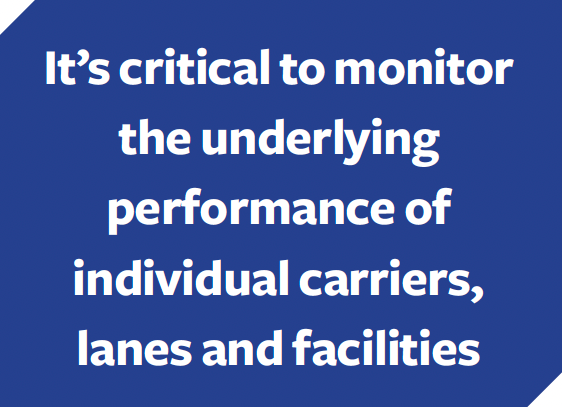How 3PLs Can Up Their Pharma Game
The growing complexity and demand in distribution amid the pandemic present unique technology opportunities for third-party logistics providers
Third-party logistics providers (3PLs) that specialize in transporting goods for the pharmaceutical industry—whether that be bulk chemicals, raw materials or finished products—are seeing a greater demand for their services than ever before. With that demand come requests for stronger guarantees, tighter service level agreements (SLAs) and more stringent operating requirements.
What does all of this mean for those at the forefront of distributing Covid-19 vaccines and other critical medical supplies? More than ever before, pharmaceutical manufacturers and their partners require consistency and protection from market volatility. As shippers increasingly seek greater guarantees of safety, stability and security for their precious cargo, they will increasingly turn to the distribution and transportation partners who can deliver.
This presents an opportunity for those logistics service providers (LSPs) savvy enough to take advantage of it. With the growing capabilities of hardware and software tools, including real-time visibility, internet of things (IoT) and advanced telematics, 3PLs and other LSPs increasingly possess the means to not only meet, but exceed these heightened expectations. In essence, the stakes may be higher than ever before, but the tools at our disposal are growing more powerful by the day.
A changing landscape
With drug manufacturers stretched thin, 3PLs are being asked to step in and pick up the slack with increased services and tighter SLAs. Their customers are reaching for any port in a storm, and though high barriers to entry provide some measure of security for established LSPs, the risk of losing long-time customers to competitors who can provide a greater degree of consistency and security continues to grow.
At the same time, demand for global operations that are integrated across modes is on the rise. In the past, pharma companies have been forced to work with a mix of asset-based transportation companies, ocean carriers and more, with 3PLs themselves being simply one part of the mix. As supply chain and distribution networks become increasingly globalized and risk-averse, companies want a more consistent global experience—and the best way of achieving that is to partner with a global 3PL.
In turn, 3PLs are investing more in technology that allows them to deliver on increasingly higher demands. Hence, platform companies are seeing an increased focus on real-time transportation visibility on the road, in the yard and at facilities, as end customers push for digital unification of their supply chains. This has been facilitated by the rapid evolution of IoT-based solutions powered by next-generation hardware and software. Among them, the rise in real-time tracking for both locations and environmentals like temperature has begun to displace legacy technologies and techniques quickly.
Environmental concerns
Nowhere are the requirements stricter than in the pharmaceutical and life sciences industry. According to the Healthcare Distribution Management Association, about 10% of all medications are temperature sensitive, and that number may only increase in the coming years. Drug development is becoming more complex, increasingly relying on large-molecule biologics that require precise temperature standardization to ensure efficacy. As a result, there is a growing need for specialized packaging, tighter delivery windows and stricter requirements in transporting temperature-sensitive goods.
Not only are modern pharmaceutical products often more sensitive to temperature changes than the typical cold chain shipment—they’re also much more valuable. Lives depend on their ability to reliably monitor the real-time environmentals of their products in transit and to react instantly and effectively when a tolerance is breached. Depending on the product, factors such as light exposure, altitude, humidity, shock and many others can physically impact the quality of the product, and must be monitored as closely as temperature.
Simply monitoring the temperature itself is not enough. To be effective, today’s visibility technology must allow stakeholders to specify ranges that may vary by shipment, pallet or SKU; as well as specify the immediacy with which stakeholders are notified of a shipment falling out of temperature compliance.
IoT on the rise
It’s also critical to monitor the underlying performance of individual carriers, lanes and facilities. Not only does this allow pharma shippers to be instantly notified if there’s ever a breakdown, theft or major delay, but it also reveals a wealth of underlying data that can be used to further optimize their distribution and ensure that shipments arrive on time. Having holistic data into the many moving parts of the modern supply chain paints a picture of all of the areas of the business that are performing well and those that stand to be improved. It also helps to establish a baseline when evaluating new carriers, optimizing existing lanes or targeting improved efficiency at facilities.

Moreover, this kind of broad-based data can be combined with network performance over time to create a complete, historical picture of individual loads, lanes and carriers. A holistic picture makes it possible to derive predictive insights into future performance, garner recommendations on how to improve individual load performance and enact strategies for boosting overall customer service and satisfaction.
Achieving this level of connectivity often requires an IoT-agnostic approach to gathering information. Because the data typically must be pulled together from many disparate sources (ranging from onboard telematics to pallet-level RFIDs to facility-level status updates), it’s helpful to have a system capable of collecting and processing vast quantities of data, then presenting them in a unified interface.
Building an infrastructure of collaboration
The growing emphasis on cold-chain shipping presents different challenges for a 3PL than for the shipper itself, who must concern themselves primarily with the proper handling and manufacture of temperature-sensitive goods. For 3PLs, the key concerns at play involve the initial investment in cold-chain infrastructure, the costs of maintaining that infrastructure once it’s been built, and the challenge of collecting and interpreting temperature-tracking data.
Furthermore, as the challenges of sourcing and transporting temperature-sensitive goods continue to rise, many shippers are reevaluating their distribution networks in favor of those more localized to their respective target region. This is true not only in the US, but also in Europe, where shortages for medical products had already increased 20-fold between 2000 and 2018—well before the effects of the current pandemic had set in.
According to Pipelinepharma, the number of RFPs from Europe-based drug manufacturers specifically seeking to partner with distributors that were also based in Europe increased by 69% in 2021. Though this may seem counterintuitive to the increasingly globalized approach discussed, it is simply a reflection of the growing desire among pharma shippers to ensure the safety, stability and security of their in-transit products.
For 3PLs in that equation, a proactive approach to collaboration and data sharing upstream could be the key to differentiating from competitors, especially as companies increasingly implement real-time supply-chain visibility solutions.
About the Author

Brad Klaus, Group Vice President, International Solutions, at FourKites
